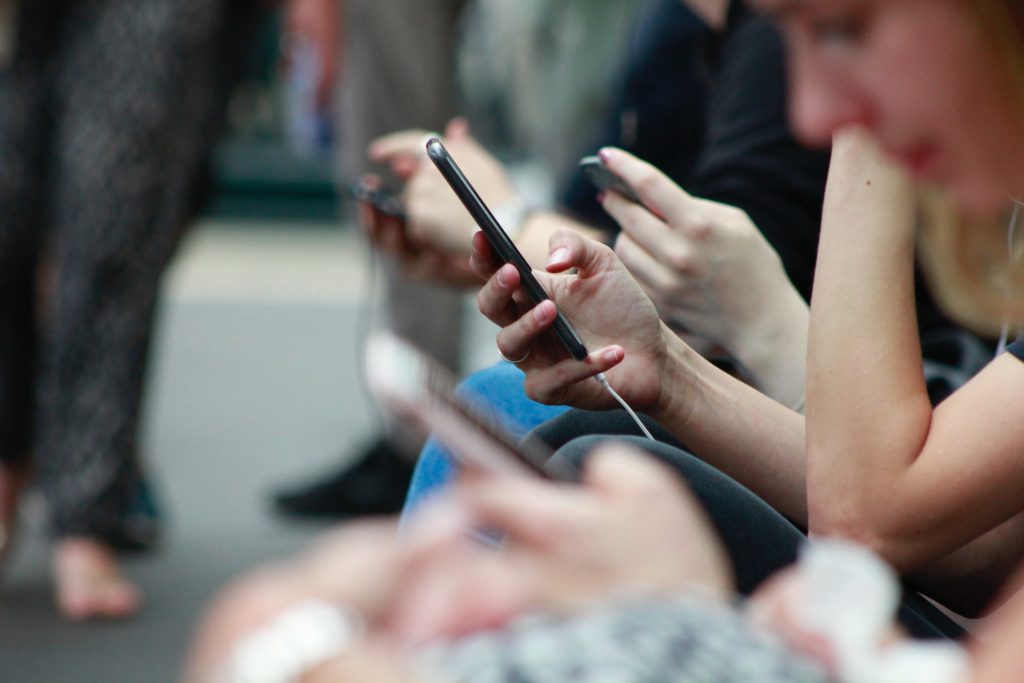Screens can be addictive. This is not new information. Learning how to work around the addictive properties of screens can have lasting positive outcomes. Taking control of your screen time and knowing when and how to stop may improve many aspects of your health.
[Do not miss the last section of the article: Strategies to regain control]
Complexity of Screen Time
“Screen time” is a packed noun. It encompasses all time you spend on all different devices you may own: Cellphone, television, computer, tablet, video-games. Not all softwares on your screens are designed to be addictive: Microsoft Word versus Instagram. Screen time on Instagram may lead to addictive behaviors because this is the way the social network is engineered: To tempt you to look at your screen incessantly. Screen time on Word will most likely lead to job or school related tasks and will not lead to addictive behaviors.
However, you may spend much more time on your screen due to the fact that you will be doing a job related task on Word, but are constantly distracted by other tabs or screens that are diverting your attention.
No, not all screen time is bad. But, its design and its multiple temptations may mitigate all the good that stems from it.
Health Benefits of Screen Time1,2,3
1. Work and School
Cutting out screen time is impossible and unrealistic for most of us given the current pandemic situation. In fact, work and school can be sustained for many because of screens !
Due to online meeting platforms, online chat platforms, e-mails, and much more, we can keep working in somewhat of a similar environment as pre-pandemic times.
However, Excel, Zoom, and Word have fewer features that will keep you hooked for extended periods of time without doing work. If your screen time is solely related to work it is unlikely to affect your social life:
Internet use at work has little effect on sociability.
Nie & Hillygus, 2002, p.11
2. Keeping in Touch Despite Distance or Restrictions
Having a screen and Internet allows many to stay in touch and interact despite pandemic-related restrictions or physical distance (i.e. living far from somebody). Keeping a social network is important as it helps manage stress, reduce depression, and improve health-related outcomes.
There are mixed findings with regards to the ways in which Internet influences social networks. On the one hand, some studies suggest that it allows social networks to strengthen, to increase social support, and social capital. On the other hand, some research suggests that it : “distracts users from their real life social networks, thereby weakening these ties.” (Hogeboom et al., 2010, p.94).
One study looking at internet use and social networking among middle aged and older adults found that:
Internet use can strengthen social networks, looking specifically at adults over 50.
Hogeboom et al., 2010, p.94
3. Educational Content for Children and Teens
Watching educational programs at a preschool age has been shown to be associated with higher grades, reading more books, placing more value on achievement, greater creativity, and less aggression. These findings are especially valid for preschoolers who watched Sesame Street.
Watching informative programs during teen years was found to predict participation in creative activities, academic extracurricular programs for girls, and a lower likelihood of smoking.
Health Drawbacks of Screen Time
The problem isn’t that people lack willpower; it’s that there are thousands of people on the other side of the screen whose job is to break down the self-regulation that you have.
A quote by Tristan Harris in Adam Alter’s book “Irresistible: The Rise of Addictive Technology and the Business of Keeping Us Hooked”
1. Creative Imagination & Mental Imagery4,5
Creative Imagination
TV viewing has been found to adversely affect multiple elements that are important for creative imagination, that is our ability to form an image of something that is not present or does not exist.
TV provides the viewer with ready-made visual images and thus does not provide viewers with practice in generating their own visual images.
Valkenburg & van der Voort, 1994, p. 317)
It is also hypothesized that television viewing suppresses creative imagination due to the time-consuming properties of television.
Mental Imagery
A recent study found that screen time affected human’s unique mental imagery ability, which requires active image generation and activation of a broad range of our senses. Mental imagery development is an important aspect of our cognitive development.
Children who spent greater amounts of time using screen media showed statistically significantly lower performances on mental imagery accuracy.
Suggate & Martzog, 2020, p.13
The viewing of 1 hour of television a day across 10 months was enough to negatively affect mental imagery abilities.
Good news: Mental imagery skills and creative imagination can improve by having children engage in pretend play, without their devices. Or, if media is used, activities that stimulate mental imagery can be beneficial. Finally, going outdoors, without technological devices is an effective way to stimulate sensorimotor system.

2. Quality of In-Person Interactions6
Face to face interactions can take a toll in the presence of mobile devices:
Conversations in the absence of mobile communication technologies were rated as significantly superior compared with those in the presence of a mobile device,
Misra et al., 2014, p.275
Conversations in the presence of mobile devices were associated with less empathetic concern with regards to other person, and were rated to be less fulfilling in comparison to interactions without devices.
Good news: Shut off your phone when conversing with somebody to allow for fulfilling and empathetic discussions.
3. Sleep Disturbance7
We all know about this one!
The use of light-emitting devices generating blue-enriched light emissions that can affect sleep. Why? Light and darkness play a huge role in regulating our circadian rhythm (sleep/wake cycles). Melatonin (“the hormone of darkness”) is produced in response to darkness and is associated with sleep. When looking at a bright light on a screen at night, it can suppress the production of melatonin, increase alertness, and delay sleep onset.
Good news: Firstly, you can turn off your screen off at least 30 minutes before going to bed and do not bring your devices in your room. Secondly, you can put your device to a night mode “that shifts blue and green light emissions to yellow and red as well as reduce backlight/light intensity” (Gringras et al., 2015).
Warning: Many devices do not allow you to switch to a night mode, such as most televisions or video games. You may consider the first option in that case.
5. Television Content Outcomes3
The type of content youth watch has been found to predict a variety of negative outcomes. Violent television predicted, in part, higher aggression, participation in fewer extracurricular activities, and lower grades. In addition to similar outcomes as violent content, other entertainment television predicted more dissatisfaction with height, weight and physical appearance.
Good news: If your child watches television, prioritize informative and educational programs with a set time limit to avoid negative health outcomes.
6. Child Development8,9
There are many studies being conducted with regards to screen time and youth development. A meta-analysis looking at clinical and psychological effects of screen time on children summed up their study with these three highlights:
1. Television viewing negatively affects locomotive skills, physical strength, dietary habits and adiposity.
2. Television viewing negatively affects the cognitive and socioemotional development of children, and excessive screen time is associated with poorer mental health during adolescence.
3 Physical activity does not compensate for the adverse effects
Domingues-Montanari (2019)
of screen time.
Good news: Consider no television at home ! Kids will always find something else to do, be it playing outside, using their imagination, playing an instrument, playing with siblings, being active. Kids are often more than willing to take part in non-screen related activities. They just have to be asked!
Strategies to Regain Control
Using strategies to control the many temptations luring us to grab our technological devices will help us in using our screens for the right reasons:
- Installing Chrome extensions that block recommended videos on YouTube, block Facebook newsfeed, block content, ads, tracking, websites and hide new emails (Distraction-Free Youtube; Facebook Newsfeed Eradicator; uBlock Origin; BlockSite; InboxWhenReady)
- Do not use screens one day a week (#ScreenlessSaturdays) – Best memories are created when people do not have access to Wifi or service
- Setting time limits (Setting – Screen Time – App Limits)
- Turning off notifications to not get distracted as soon as you receive a message (Settings – Notifications)
- Unfollowing friends on Facebook (Go to friend profile, click the person emoji, click unfollow)
- Unfriending people you haven’t spoken to in the past year on Facebook
- Deleting apps that lead to incessant scrolling
Knowing the ways in which you use your screen might give you insight on the ways it may be affecting your health.
- Are you spending endless hours scrolling on your feed and not feeling confident, feeling lonely, or not sleeping well afterwards?
- Are you having a video call with your friend and feeling connected and satisfied afterwards?
Next Steps
Watching the movie The Social Dilemma also presents findings of the ways social media affects our belief system, our privacy, our society’s democracy, and of course our mental health.
Finally, please take a look at these tips to rewire your relationship with technology.
References
1.Nie, H. N., & Hillygus, D. S. (2002). The impact of internet-use on sociability: Time diary findings. IT & Society, 1(1).
2. Hogeboom, D. L., McDermott, R. J., Perrin, K. M., Osman, H., & Bell-Ellison, B. A. (2010). Internet use and social networking among middle aged and older adults. Educational Gerontology, 36(2), 93–111. https://doi.org/10.1080/03601270903058507
3. Anderson, D. R., Larson, R., & Society for Research in Child Development. (2001). Early childhood television viewing and adolescent behavior : the recontact study (Ser. Monographs of the society for research in child development, serial no. 264, v. 66, no. 1). Blackwell.
4. Valkenburg, P. M., & van der Voort, T. H. A. (1994). Influence of TV on daydreaming and creative imagination: A review of research. Psychological Bulletin, 116(2), 316–339. https://doi.org/10.1037/0033-2909.116.2.316
5. Suggate, S. P., & Martzog, P. (2020). Screen-time influences children’s mental imagery performance. Developmental Science, E12978, 12978. https://doi.org/10.1111/desc.12978
6. Misra, S., Genevie, J., Cheng, L., & Yuan, M. (2016). The iphone effect: the quality of in-person social interactions in the presence of mobile devices. Environment and Behavior, 48(2), 275–298. https://doi.org/10.1177/0013916514539755
7. Gringras, P., Middleton, B., Skene, D. J., & Revell, V. L. (2015). Bigger, brighter, bluer-better? current light-emitting devices – adverse sleep properties and preventative strategies. Frontiers in Public Health, 3. https://doi.org/10.3389/fpubh.2015.00233
8. Madigan, S., Browne, D., Racine, N., Mori, C., & Tough, S. (2019). Association between screen time and children’s performance on a developmental screening test. Jama Pediatrics, 173(3), 244–250. https://doi.org/10.1001/jamapediatrics.2018.5056
9. Domingues-Montanari, S. (2017). Clinical and psychological effects of excessive screen time on children. Journal of Paediatrics and Child Health, 53(4), 333–338. https://doi.org/10.1111/jpc.13462





